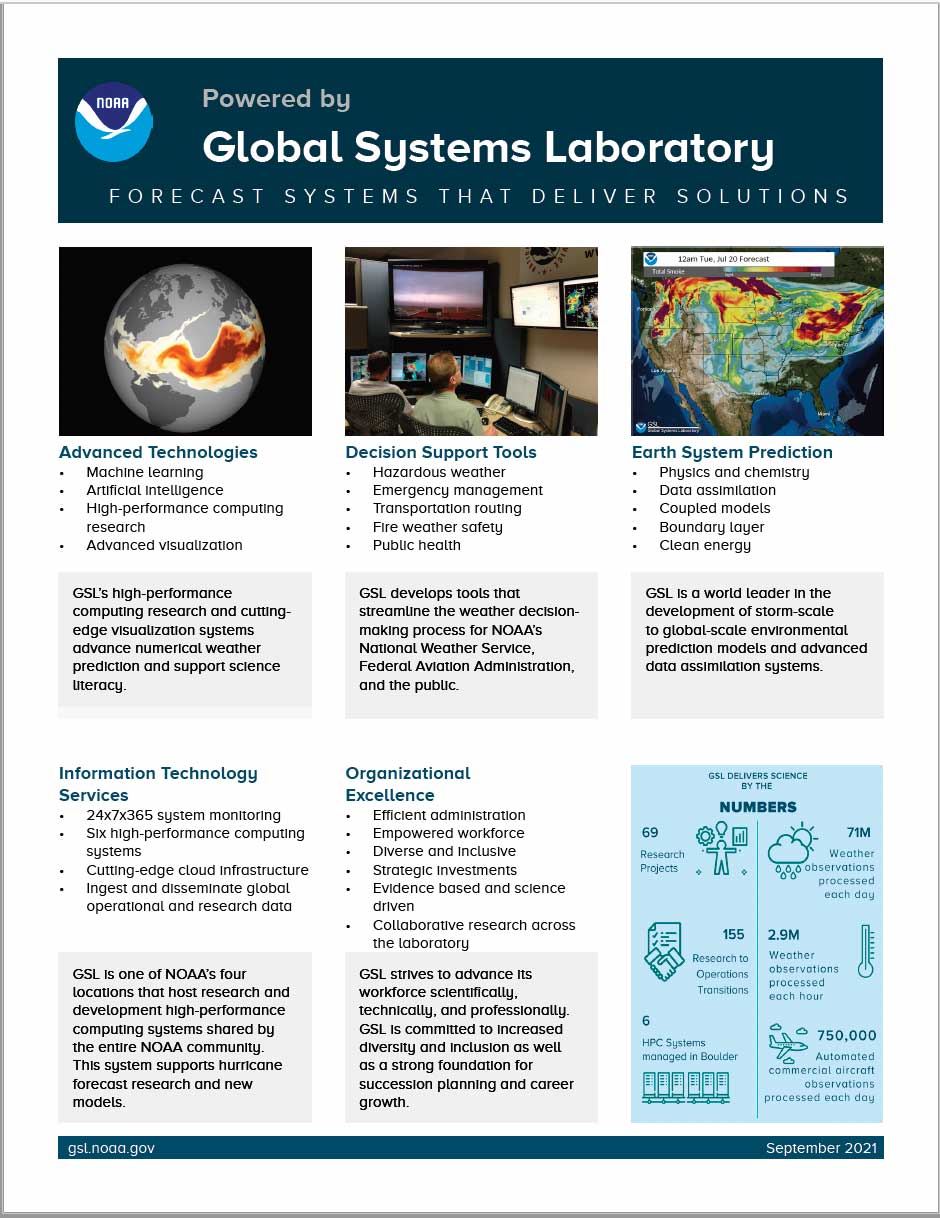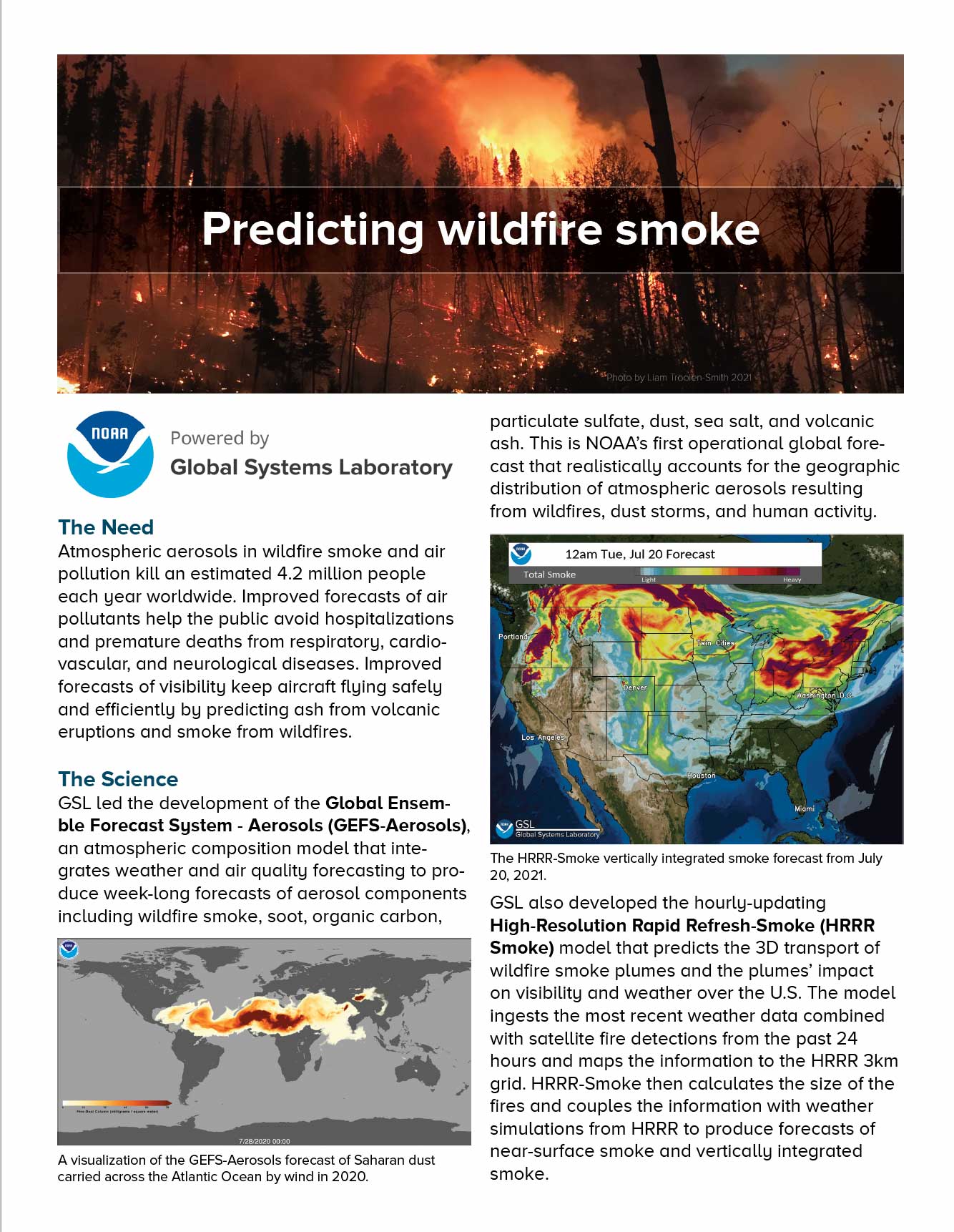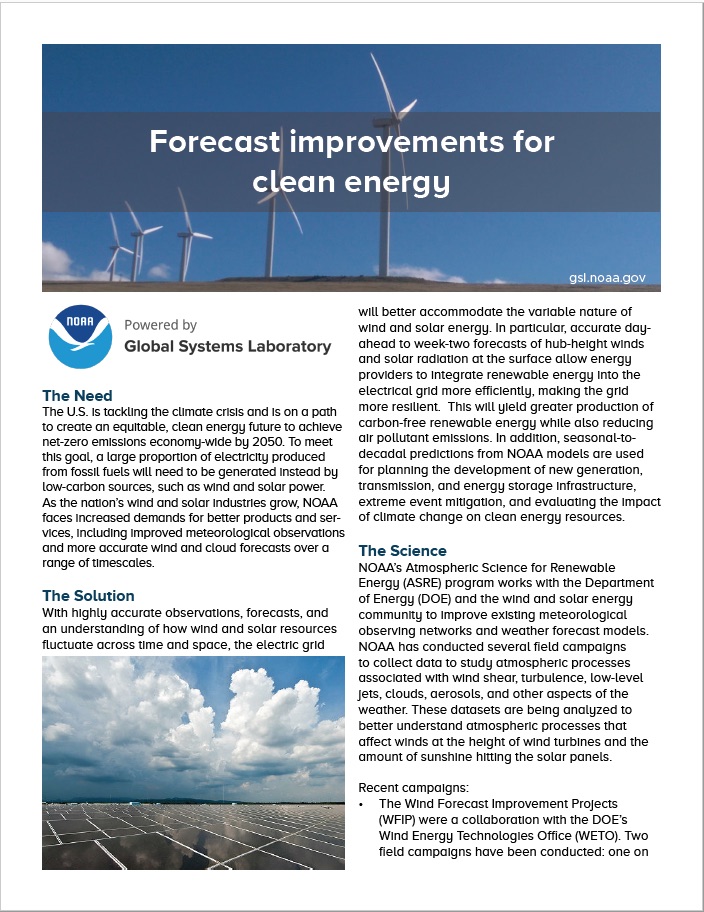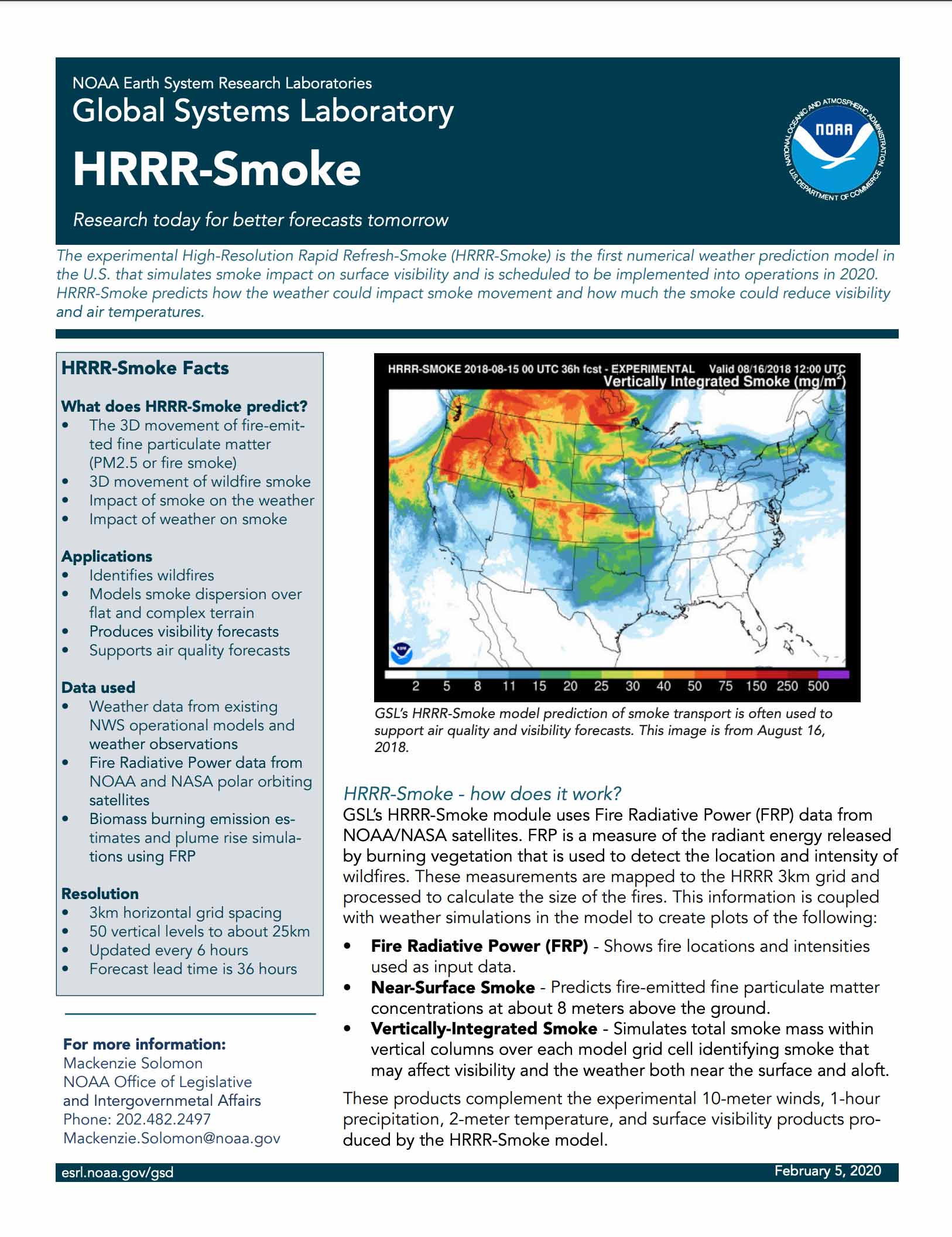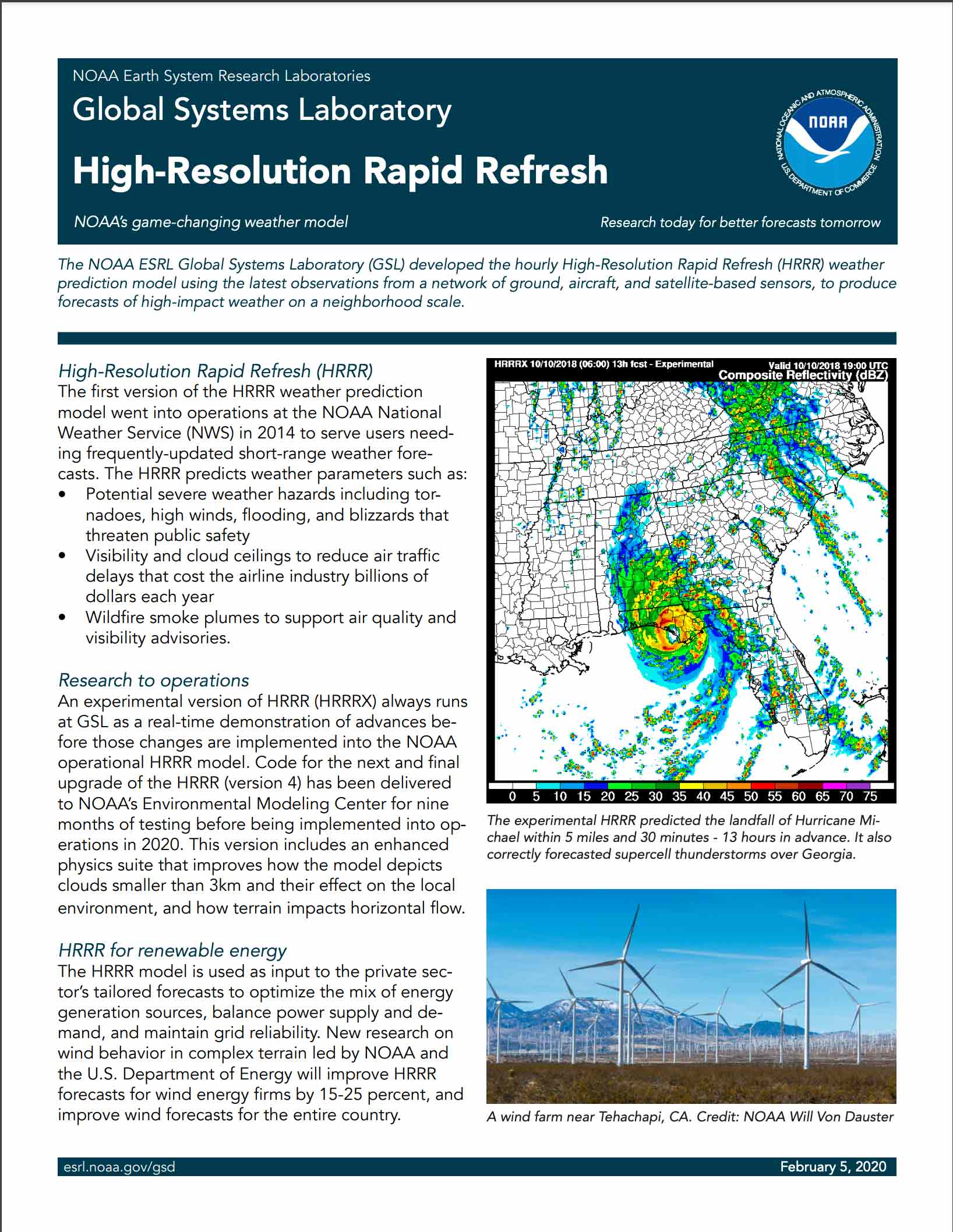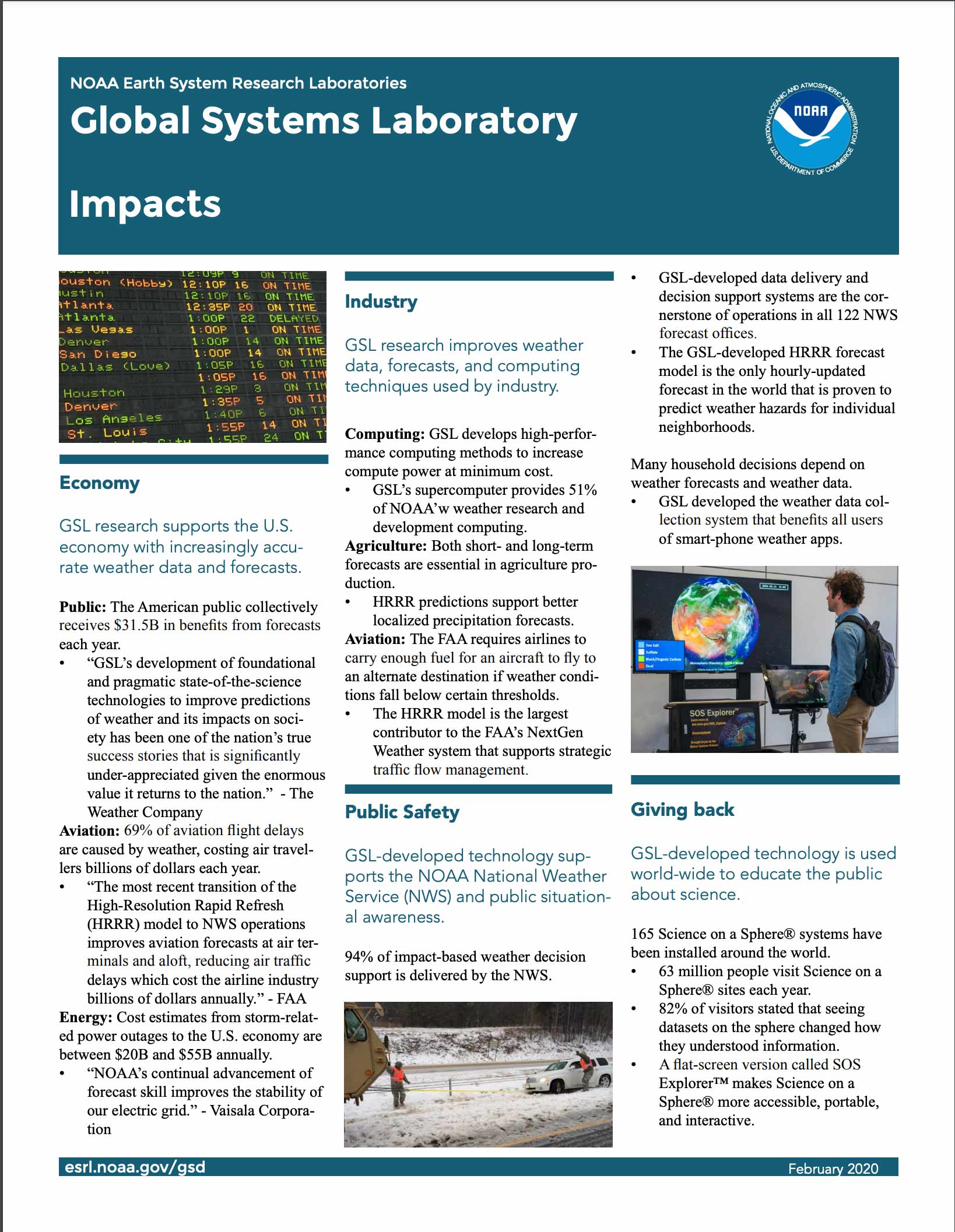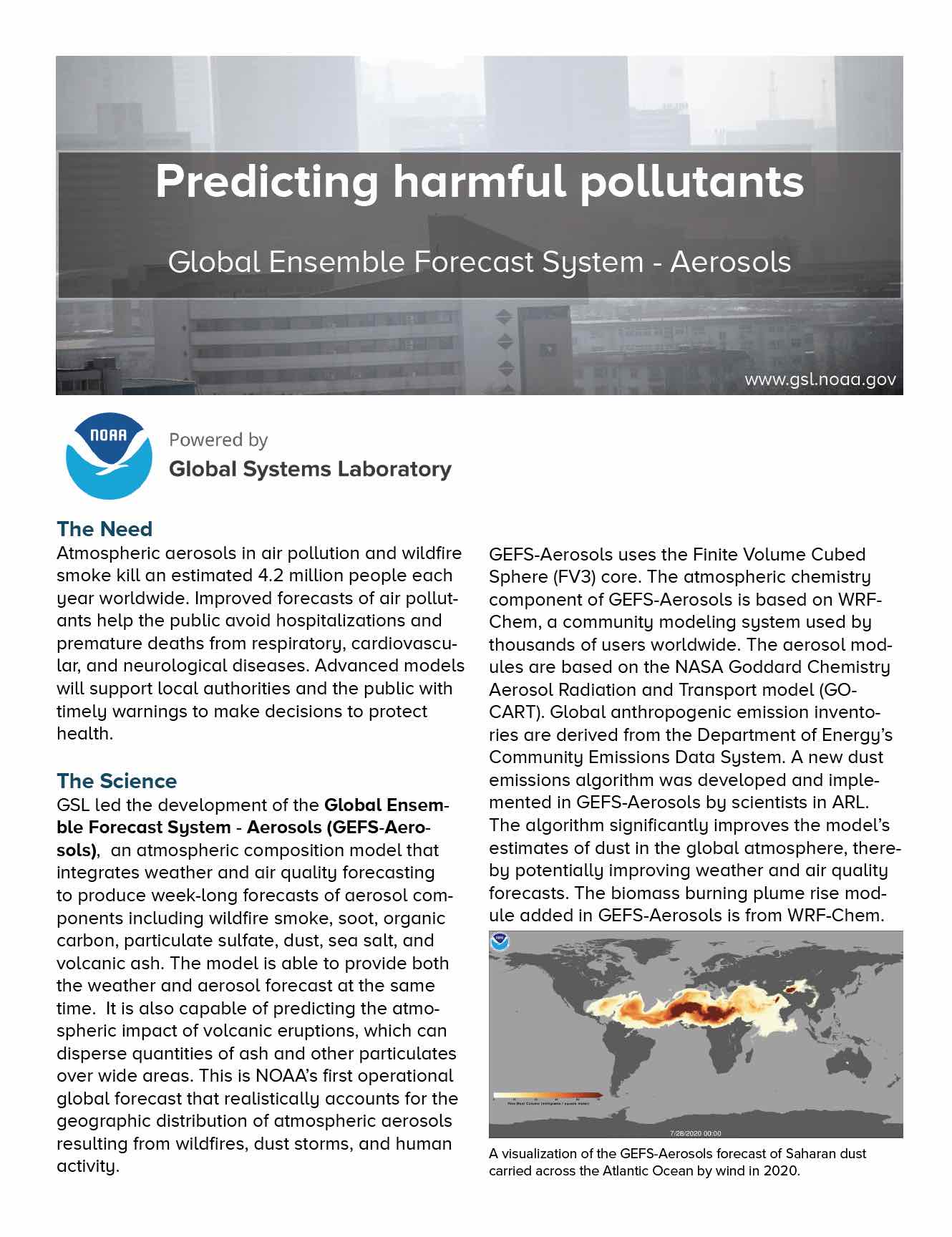Science Fact Sheets
The Global Systems Laboratory (GSL), part of NOAA’s Oceanic and Atmospheric Research, leads the design, development, testing, and delivery of accurate and reliable weather forecast system solutions, impacting the economy, industry, public safety, and more.
GSL Clean Energy Research - 2022
Boulder's Jet Supercomputer - A legacy of innovation at NOAA - 2022
Predicting Wildfire Smoke - 2021
GSL research has predominantly focused on the areas of atmospheric chemistry, atmospheric physics, and developing models that predict smoke from wildfires.
GSL Research Highlights
GSD-Impacts: A compilation of how GSL research impacts the U.S. with specific stories.
NOAA State of the Science Fact Sheet - Fire Weather: Weather has long been recognized as having both an influence on fires and being affected by fire. For example, strong winds and above-average temperatures coupled with very dry air and surface conditions are associated with an elevated likelihood that fires will rapidly spread, and thus these meteorological conditions are important for fire behavior forecasting. Similarly, a thick smoke plume can modify the weather downstream from a fire due to the large reduction in solar energy reaching the surface by the smoke itself.
HRRR Fact Sheet: The High-Resolution Rapid Refresh (HRRR) weather prediction system merges weather prediction science and high-performance computing technology with breakthrough techniques for using radar data and satellite data to make neighborhood-scale weather forecasts more accurate. The first version of HRRR went into NOAA NWS operations in 2016, and the final version was implemented on December 2, 2020.
HRRR Smoke Fact Sheet: The experimental High-Resolution Rapid Refresh-Smoke (HRRR-Smoke) model simulates the emissions and transport of smoke from wildfires and the impact of smoke on the weather. This is increasingly being used by NOAA’s National Weather Service (NWS) and air quality agencies to alert the public of potential air quality hazards,. This model was implemented into operations on December 2, 2020.
Predicting Harmful Pollutants:Global Ensemble Forecast System - Aerosols
Science with our collaborators
Science On a Sphere® Fact Sheet: GSL's Science On a Sphere® uses high-speed computers, projectors, and advanced imaging techniques to create the illusion of a planet, the Sun, a moon, or any other celestial body rotating in space and to show weather and other geophysical data.
SOS-Explorer Fact Sheet: A desktop-based version of SOS®, SOS Explorer™, helps bring the SOS® experience into classrooms and homes. SOS Explorer™ builds upon SOS exhibits with many of the same datasets, but allows users to explore the data in ways that are not possible in an exhibit setting

